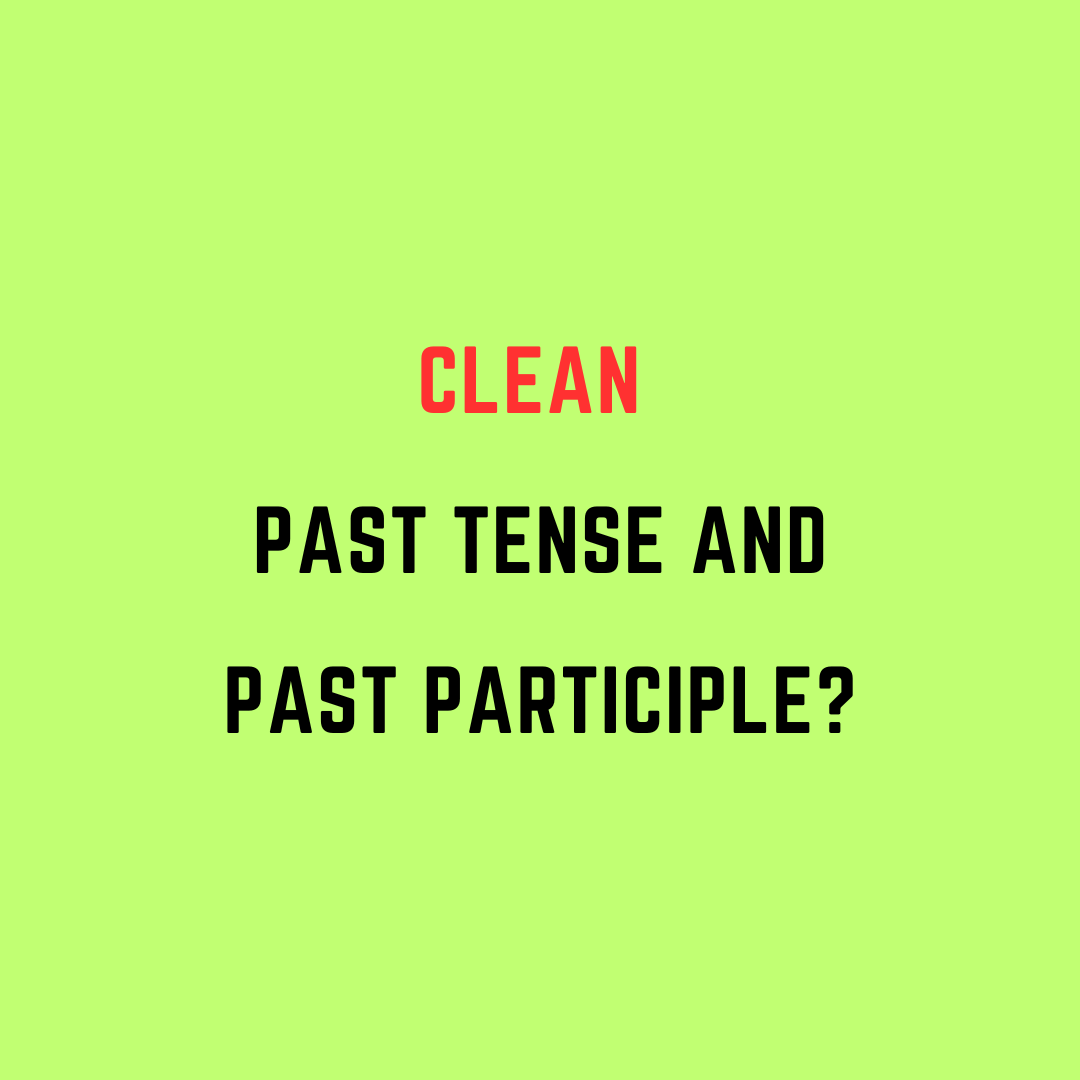Clean Past Tense and Past Participle: Demystifying Verb Forms
In the English language, verbs play a vital role in expressing actions and states of being. However, understanding their past forms can sometimes be confusing, especially for irregular verbs like “clean.” Let’s delve into the intricacies of the past tense and past participle of “clean” to ensure clarity and accuracy in your writing.
Clean Past Tense:
The past tense of clean is cleaned. Clean past tense form indicates that the action of cleaning occurred in the past. Here are some examples of its usage:
- She cleaned her room before her parents came home.
- The janitor cleaned the floors after the party ended.
- They cleaned the dishes after dinner.
Clean Past Participle:
The past participle of “clean” is also cleaned. Clean past participle form is primarily used in the perfect tenses and the passive voice. Here are some examples:
- She has cleaned her room twice today. (present perfect tense)
- The car had been cleaned by the mechanic before I arrived. (past perfect tense)
- The dishes were cleaned and stacked neatly in the cupboard. (passive voice)
Clean Verb Forms:
To fully understand the past tense and past participle, it’s important to be familiar with clean verb forms. We teach all verb form in our course of How to Speak English Fluently and Confidently.
- Base form: clean
- Present tense: cleans
- Past tense: cleaned
- Past participle: cleaned
- Present participle: cleaning
- Third person singular: cleans
As you can see, “clean” is a regular verb, meaning its past tense and past participle are formed by adding “-ed” to the base form. This helps us avoid confusion with irregular verbs, whose past forms often change significantly.
Clean Third Form:
While both “cleaned” and “cleaning” are considered past participles, clean third form serve different functions:
- Cleaned: This form is used in the perfect tenses and passive voice.
- Cleaning: This form is used as the present participle, indicating an ongoing action.
For example:
- She is cleaning the kitchen right now. (present continuous tense)
- I saw her cleaning the car yesterday. (past continuous tense)
Key Takeaways:
- The past tense and past participle of “clean” are both cleaned.
- “Cleaned” is used in perfect tenses and the passive voice.
- “Cleaning” is used as the present participle.
- “Clean” is a regular verb, following the standard pattern of adding “-ed” to form the past tense and past participle.
By understanding these distinctions and using them accurately, you can enhance your writing and ensure clear communication. Remember, consistent practice and awareness are key to mastering verb forms and avoiding grammatical errors.
FAQs
1. When do I use “cleaned” and when do I use “cleaning”?
Ans–
- Cleaned: Use “cleaned” with the present perfect tense, past perfect tense, and passive voice.
- Cleaning: Use “cleaning” with the present continuous tense, past continuous tense, and gerunds.
Here are some examples:
- He cleaned his room yesterday. (past tense)
- She has cleaned the dishes three times today. (present perfect tense)
- The floor was cleaned before the party started. (passive voice)
- She is cleaning the kitchen right now. (present continuous tense)
- I saw him cleaning the car yesterday. (past continuous tense)
- I enjoy cleaning because it makes me feel relaxed. (gerund)
2. Are there any irregular verbs that have the same past tense as “clean”?
Ans– Yes, several irregular verbs have the same past tense as “clean,” such as “lean,” “mean,” and “seem.” However, these verbs have different past participles.
3. Is there a difference between the past tense and past participle of “clean”?
Ans– No, the past tense and past participle of “clean” are the same, both being cleaned. This is because “clean” is a regular verb.
